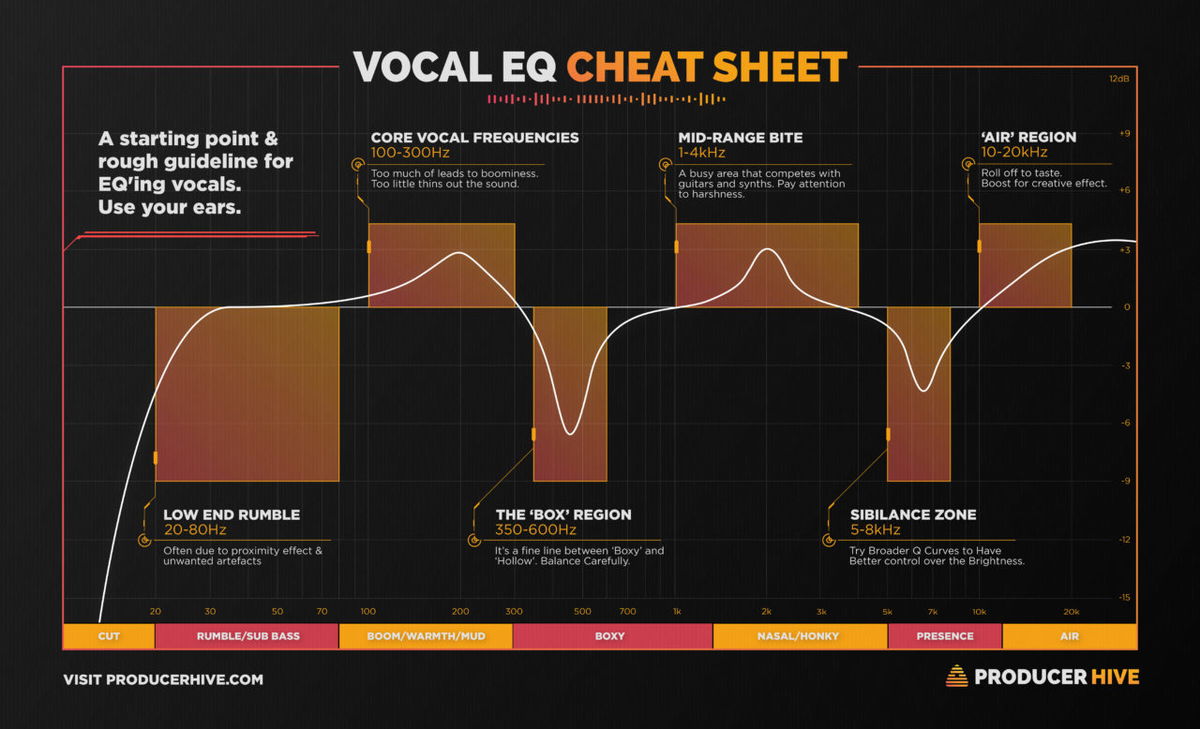I don't really have a specific set of frequencies that I use for EQ-ing by ear btw.
The fewer controls the better though. So, rather than using the standard 10, 15 or 31 bands, what I will sometimes do is use an arrangement of points which are based on the particular inflection points (peaks and valleys) in either my headphone's frequency response curve, or its EQ curve (after I've roughed one out), or in my target response curve. Or some combination of these.
The Equalizer APO's Configuration Editor allows you to stack as many graphic or parametric EQ controls together as you want. So I will frequently use multiple graphic EQ's at the same time with different configurations of points.
The simplest of these might have only 2 points, at 20 Hz and 20 kHz, to control just the overall tilt of the curve. Another EQ might be used to bring the midrange more forward or backward, like a Fletcher-Munson effect. Others might be configured to match the center and cross-over frequencies of a loudspeaker's drivers (ie the sub-woofer, midrange driver and tweeter). Another EQ might be used to control the falloff in either the bass or treble, or both... And so forth. The possibilities are really endless with such an interface.
I have also used EQ controls which are based on octave intervals, or fractions (usually 1/2 or 1/3), or multiples of same. And will also often use one or more sets of EQ controls for the broader tonal adjustments (ie bass, midrange, treble, or something similar), in conjunction with a separate set of more carefully and discretely targeted controls, based (as I said above) on the inflection points in my target curve, or headphone's FR or EQ curves, for fine-tuning specific areas of its frequency range. I generally need more points for the upper mids and low treble than for the lower mids and bass for example. But it really sort of depends on where the specific trouble spots are in the headphone's response.
The fewer controls the better though. So, rather than using the standard 10, 15 or 31 bands, what I will sometimes do is use an arrangement of points which are based on the particular inflection points (peaks and valleys) in either my headphone's frequency response curve, or its EQ curve (after I've roughed one out), or in my target response curve. Or some combination of these.
The Equalizer APO's Configuration Editor allows you to stack as many graphic or parametric EQ controls together as you want. So I will frequently use multiple graphic EQ's at the same time with different configurations of points.
The simplest of these might have only 2 points, at 20 Hz and 20 kHz, to control just the overall tilt of the curve. Another EQ might be used to bring the midrange more forward or backward, like a Fletcher-Munson effect. Others might be configured to match the center and cross-over frequencies of a loudspeaker's drivers (ie the sub-woofer, midrange driver and tweeter). Another EQ might be used to control the falloff in either the bass or treble, or both... And so forth. The possibilities are really endless with such an interface.
I have also used EQ controls which are based on octave intervals, or fractions (usually 1/2 or 1/3), or multiples of same. And will also often use one or more sets of EQ controls for the broader tonal adjustments (ie bass, midrange, treble, or something similar), in conjunction with a separate set of more carefully and discretely targeted controls, based (as I said above) on the inflection points in my target curve, or headphone's FR or EQ curves, for fine-tuning specific areas of its frequency range. I generally need more points for the upper mids and low treble than for the lower mids and bass for example. But it really sort of depends on where the specific trouble spots are in the headphone's response.
Last edited:

















